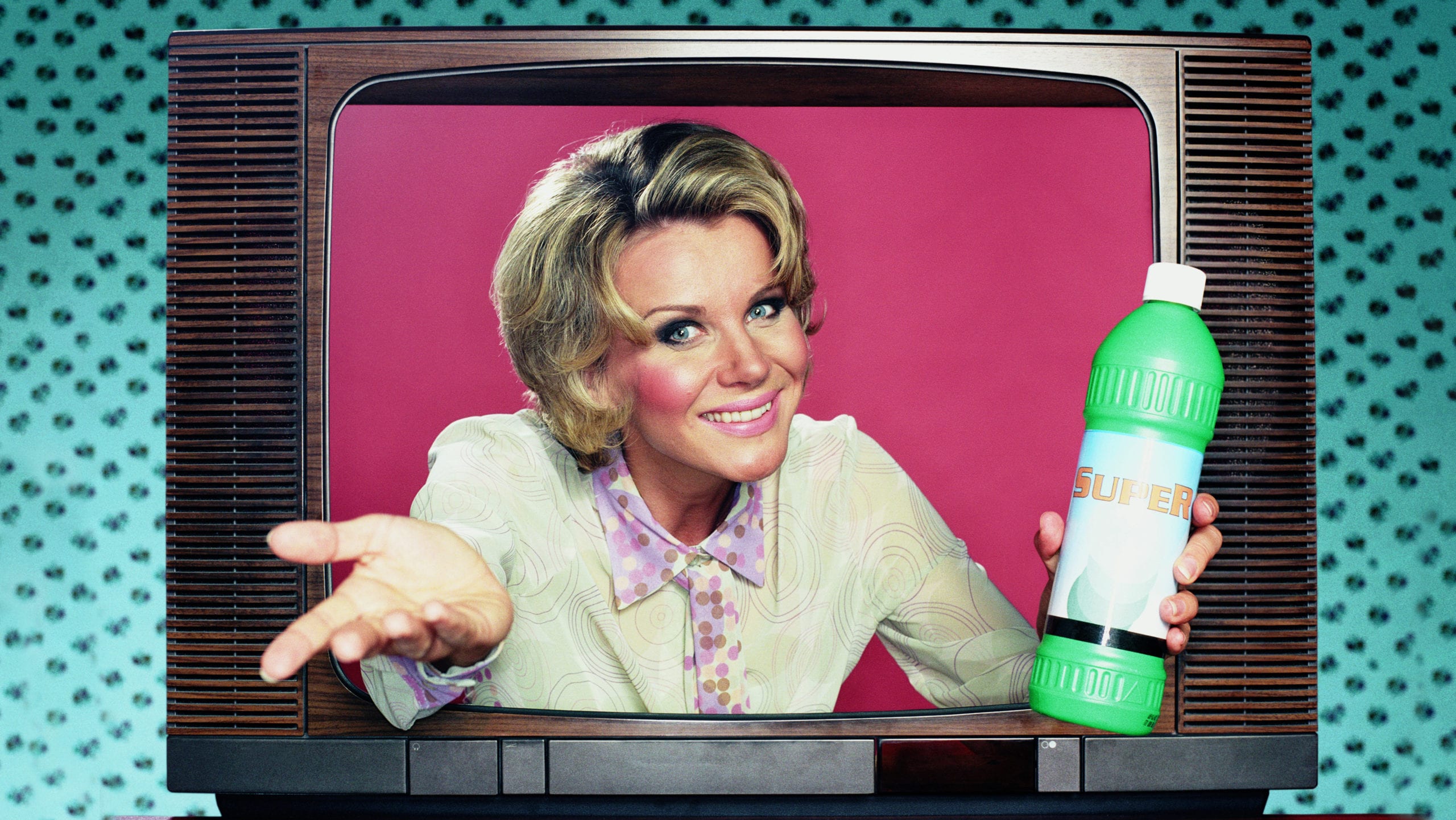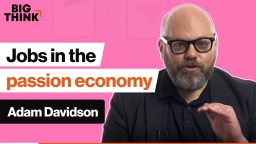Don’t fall into the personal brand trap

- The personal brand has proven a popular career prescription since the 1990s.
- Brand designer Debbie Millman argues that the concept of personal branding is self-contradictory.
- Rather than building a personal brand, you should focus on developing your capabilities, relationships, and sense of authenticity.
It’s not unusual for corporate memes to leak into everyday use. Perhaps you’ve noticed an influx of “ninjas,” “mavens,” and “gurus” populating your social networks as of late? But one meme that has taken a powerful hold in our culture is the “personal brand.”
This brand-centered mindset, as summarized by Tom Peters, charges that: “Regardless of age, regardless of position, regardless of the business we happen to be in, all of us need to understand the importance of branding. We are CEOs of our own companies: Me Inc. To be in business today, our most important job is to be head marketer for the brand called You.”
While the concept has its roots in the 1990s, at that time, it was mostly relegated to executive circles and the occasional celebrity’s fall from grace. With the internet and social media, the personal brand transformed from a niche idea to social wildfire.
Suddenly, we weren’t performing jobs but curating the experience of us. We weren’t professionals building relationships but influencers appealing to followers for likes and retweets. We weren’t even hobbyists anymore but side hustlers looking for extra income and social sway in the gig economy.
But there’s a problem with this mindset, argues educator and brand designer Debbie Millman. Namely, personal brands are oxymoronic. You can’t be a brand and live your life as a person because the two have different goals. And trying to fit yourself into this contradictory state can make success or a good life — in whatever forms those may take for you — difficult to achieve.
A branded history of the world
Perhaps the oldest (and most literal) form of brand marketing as we’d recognize it today dates back to 2700 BC. The ancient Egyptians would use bronze branding irons to scar their livestock with symbols. These symbols represented ownership over an animal in case it was lost or stolen.
If you think about it, it’s not much different than Nike branding your sneakers with its iconic swoosh to show its ownership of the design. In fact, the word brand comes to us from the Old English brond, meaning “fire or flame.”
With that said, Millman pushes the history of brands back even further. She makes the case that the progenitors of modern brands appeared 10,000 years ago during the Neolithic Revolution. At that time, our ancestors began using religious symbols and rituals to communicate their beliefs and distinguish them from the beliefs of others.
Whenever the date is set, brands soon spread beyond sheep and shrines to mark just about everything we make and experience. Ancient Greek merchants branded wine amphoras as a seal of not only ownership but also quality and reputation. After the Sung dynasty invented block printing, signboards, advertisements, and brand-specific packaging soon followed.
But things really took off in the 18th century with the advent of trademarks and the Industrial Revolution. Soon after, logos became a ubiquitous means of differentiating one similar mass-produced good from another. Advertising agencies cropped up to sell attention and loyalty to their clients. And technologies provided ever new ways to deliver on-brand messaging.
Today, brands are an inescapable part of life. Shoes, sugar, soul music, sports teams, and space travel are all defined by brands. Even water, one of the most abundant resources on the planet, is distributed internationally through more than 100 different brands — though owned by only a handful of corporations.

The why of brands
This hasty history indicates what Millman argues is the goal of any brand: to create manufactured meaning around products, practices, beliefs, or concepts. People then use those brands to signal their allegiance with, or divergence from, that meaning. This is as true for a political affiliation (“I Like Ike”) as your video game console of choice (“Sega does what Nintendon’t”).
“I’m not saying that in a way that disparages this process; it’s actually a manufactured construction,” Millman said in an interview. “[But] brands don’t grow on trees. They don’t have any internal life. They don’t have a consciousness, they don’t bleed. We create them. We create a series of symbols, of beliefs, of behaviors, all embedded in this thing that we then call a brand.”
Because brands don’t exist in nature, we construct that meaning through two traits that any brand must possess: consensus and consistency.
Consensus here doesn’t mean everyone feels the same way about a brand. Just ask any self-identified Coke or Pepsi person. Rather, groups of people instill their brands with meaning as a means to signal “to others nonverbally who [they] are, what [they] believe, what is important to [them].” The Star of David, the Buddhist Dharma wheel, the Christian cross, and the Islamic star and crescent were all designed by their respective communities as symbols of identity, social cohesion, and shared values.
Whether we affiliate with one, another, or none signals our relationship to those communities and their values. That same drive extends to the cars we buy, the cafés we frequent, and the logos on our weekend hoodies.
Then there’s consistency. If a brand holds one meaning today and an entirely different one tomorrow, people won’t be able to maintain the sense of cohesion and shared identity that drew them to that brand in the first place.
“The only people that really like brand changes are brand designers and brand managers – that’s it. There’s no consumer that has ever gone to a shelf, seen that their brand has changed and been excited,” Millman said.
This is why so many corporations have brand handbooks and spend millions to protect their brand architecture. It’s why the religious orthodoxy does not tolerate beliefs it deems heretical, and why conflict in a political party often leads to schisms.
Consistency may seem more a luxury than a necessity given the longevity of brands like McDonald’s. But the fast-food chain has always promoted itself as a family-friendly, feel-good, and unpretentious brand. What’s changed has been the way the company markets that meaning through its design (its logo, commercials, offerings, and so on).
Its many rebrandings haven’t been a way to alter its meaning; they’ve been a means to retain that meaning among the currents of our ever-shifting culture.

The personal brand trap
These traits make brands useful for corporations, political parties, and ancient Egyptian ranchers, but they are stifling for people. This is the crux of Millman’s dislike of the personal brand concept.
As she told The New York Times: “But to be a brand takes all of the sort of glorious humanity out of being human. You become this manufactured thing. And all the things that are so wonderful about being human, changing our minds, being messy, being inconsistent, all of those things are the things brands try to avoid being.”
While you can try to emulate the positive qualities of branding, the truth is that rulebook wasn’t designed with you in mind. Brands are static creations, while you must be a dynamic participant in your life and career. Brands let the consensus of others dictate their values and meaning, while you must discover both for yourself. Brands chase consistency by reorienting to match the expectations of “consumers,” while you must have reserve room to grow and develop without a sense of self-fraudulence.
Take the personal-branding prescription too far, and you run the risk of cementing your identity to the brand. New passions are unexplored. Fears and struggles must be ignored over concerns of not being “on brand.” And your life endeavors are filtered through the lens of marketability rather than the pursuit of their intrinsic worth.All of which can be counterproductive to your sense of authenticity. As one meta-analysis found, authenticity had a positive relationship with both well-being and engagement. But to achieve that, you must meet yourself as you are today, not who you were 10 years ago when you settled on your personal brand.
Rethinking personal branding
If we’re stuck with the term personal brand — and it seems we are — then we can at least shift our understanding to something more humanizing than “Me Inc.”
Millman’s definition of personal branding is “deliberate differentiation.” That is, the celebration of your values and skills paired with your ability to communicate those with enthusiasm and sincerity. Discovering that can be as messy or inconsistent as you need it to be. And because differentiation is the key, your meaning can grow and evolve with you.
Nor is Millman alone in her distrust of personal branding. Guy Kawasaki, former Apple brand evangelist and founding partner of Garage Technology Ventures, also worries that people may take the wrong lessons. To help, he’s developed six guiding principles to make personal branding something that’s truly personal.
Be genuine
Don’t try to shape yourself to what’s trendy. The qualities that make you you should be the core of your reputation, career development, and relationships with others.
Be focused
Be honest about what subjects, industries, or purposes drive you. Make that and not today’s trends your focus.
Be mindful
You aren’t the same person you were 10 years ago. Why should your goals be the same as then?
Be open
Look for opportunities to connect with others and share your passions and expertise. But don’t think we have to be everything to everyone everywhere.
Be positive
There are already enough jerks, right?
Be willing to fail
Accept that failure happens, learn what lessons you can from it, and move on.
A new era in branding history
None of this is to say that the future of brands won’t be better or more personal. It’ll just be personal in a different way than the personal branding gurus and mavens think.
As Millman pointed out in her interview, the next watershed moment for brands appears to be democratization. Increasingly, people desire to buy from companies that they feel are ethical and help to realize their values in the world. That has flipped the messaging. Instead of branding being used to signal difference, it’s now used to communicate how the brand makes a difference.
“[People] want to understand and know that the things that they’re buying are coming from companies whose values and whose mission they feel are worthy of contributing to. And that’s a big sea change and something that we have really never seen before,” she said.
In other words, the next step in the history of brands isn’t us becoming brands. It’s making brands better for us.
Learn more on Big Think+
With a diverse library of lessons from the world’s biggest thinkers, Big Think+ helps businesses get smarter, faster. To access Debbie Millman’s full class for your organization, request a demo.





